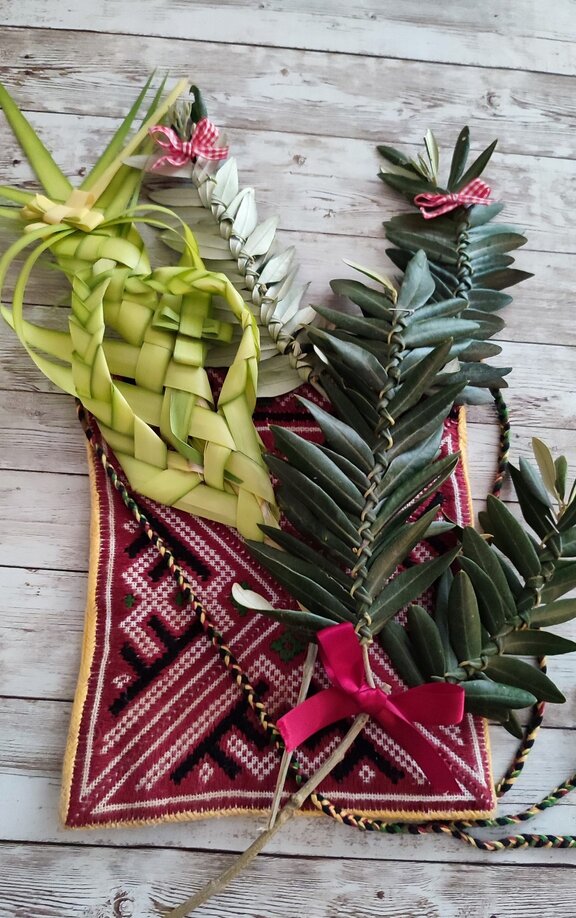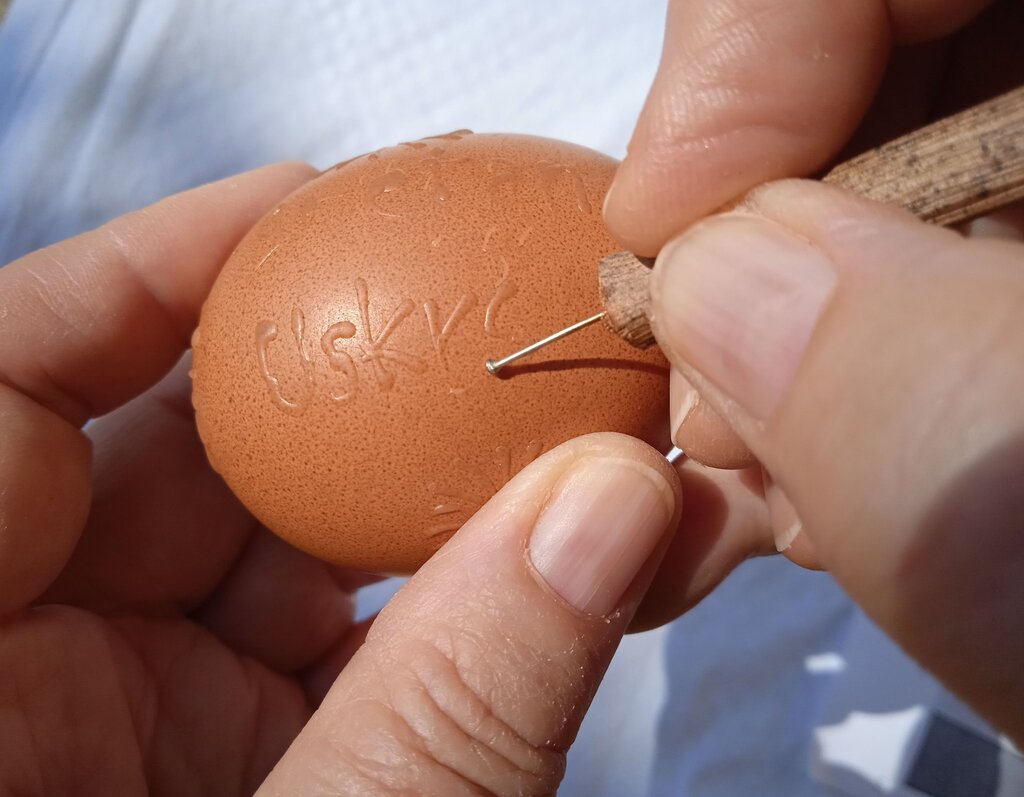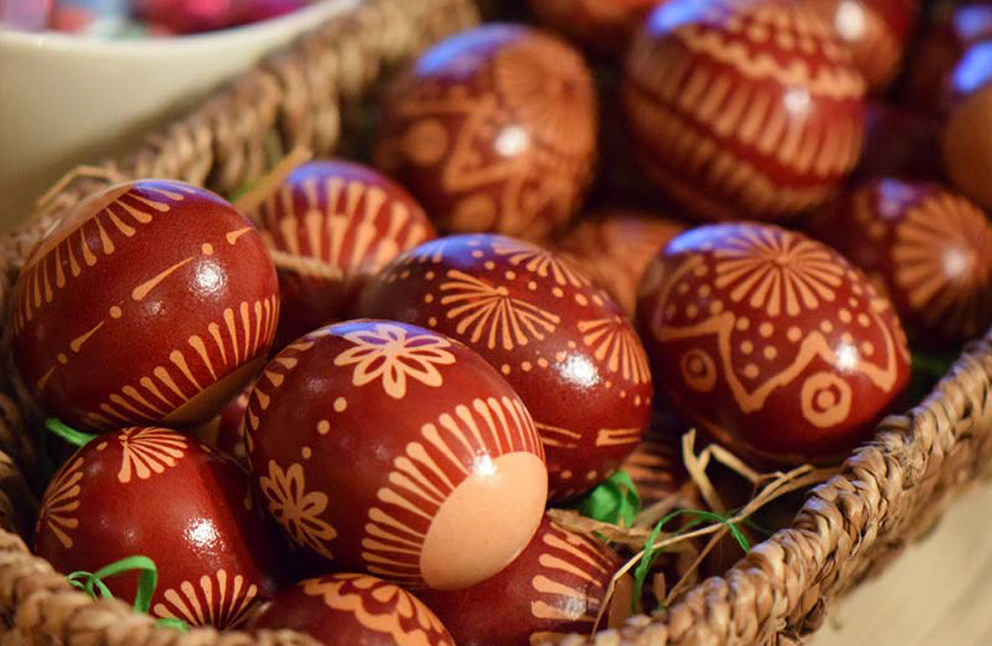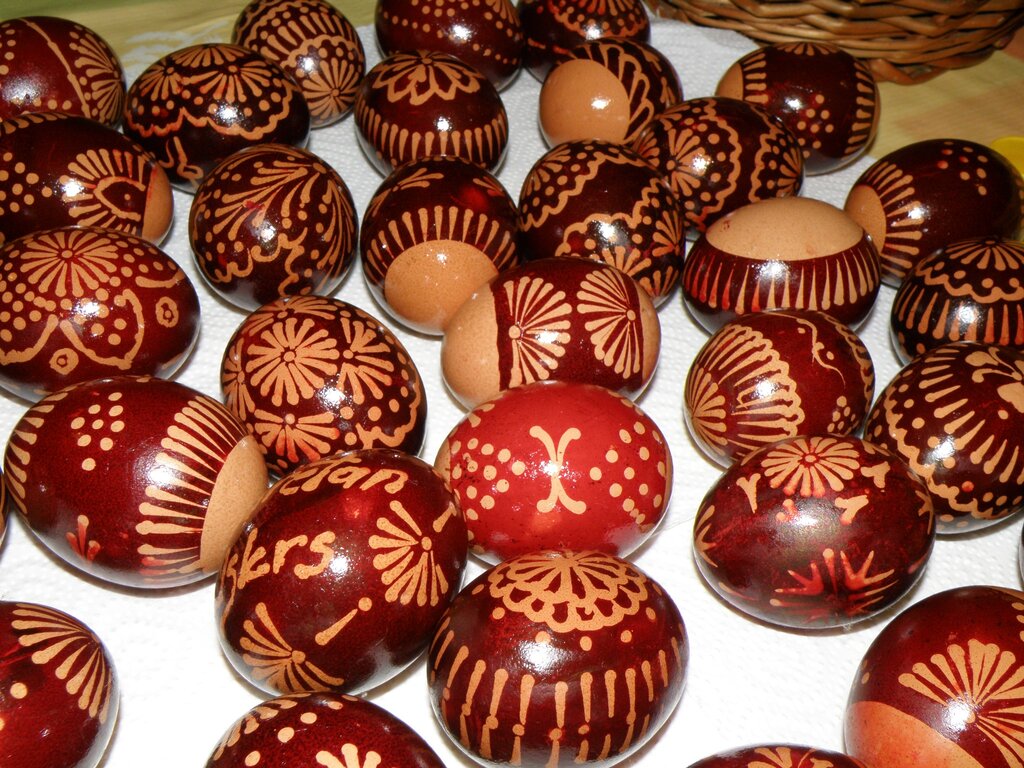The awakening of nature in the spring season has always been associated among the Konavle people with the awakening of creativity, the most important of which are the arts of making and painting festive Easter eggs.
On Palm Sunday, the Sunday of the Passion of the Lord, and the last Lenten Sunday before Easter Week, the faithful in church processions carry woven palm fronds and olive branches. Palm weaving has been common throughout history in the Dubrovnik area, but the Konavle people adopted this custom only 60 years ago. Until then reigned the custom of carrying leaves of the heart of palm or whole branches tied with rope, tape or a ribbon. The faithful called this bundle of palm and olive branches, which would most often be carried over their shoulders by the host, the Blessing, and they believed that it brought health and well-being throughout the year. From the Great Blessing, after the procession, smaller bunches were made and carried to farmlands to protect the crop.

Blessings would be kept from one Palm Sunday to the next Palm Sunday the following year, and then they would be burned, both in houses and churches, and the ashes would be used for the ceremony on Ash Wednesday, the first day of Lent. Nowadays, the craft of weaving young palm leaves has developed; depending on the imagination and skill of the maker, they are formed into crosses, logs, ladders, and chains. In addition to weaving palm fronds, creativity is also reflected in the art of painting eggs.

Since ancient times, women have dyed eggs on Good Friday or Holy Saturday. Then, as well as today, wax was used to on-lay patterns of dots, dashes, circles, and crosses upon the eggs, which would then be dyed using the pigment made from the skin of red onions. Often, for this purpose, dyes for clothes or plants with pigment such as madder were also used, for a deeper shade of red. Patterned decorations made of real beeswax are ‘painted’ onto eggs or, more precisely, applied to the eggshell with the tip of a pin inserted into the twig of a grape vine. While making decorations, wax should constantly be maintained in a liquid state, and the patterns should be applied with quick and deft movements.
The needle is dipped in wax, and the wax-decorated eggs are placed in water with dye, so they heat up slightly, until the wax dissolves, slips off the eggs. and leaves a mark in the form in which the author conceived it.


Originally, messages of good wishes for the recipients of Easter eggs were not a common practice in Konavle, however, one traditional motif vehemently resisted change. It was a flower with four petals on each side of the Easter egg, sometimes enriched with a rosette. Konavle families in mourning would welcome the holiday only with boiled, not painted, eggs.
In Konavle families Easter Day would begin with prayer and food, which was sprinkled with holy water that the family members had previously brought from the early morning blessings in the church. If a few crumbs of Easter cake or bread or eggshells were left after the meal on the dining table, the Konavle people would collect all the leftovers, burn them in the hearth, and then use this to sprinkle the earth in the farmlands, under the fruit trees and vines, for a better yield. In the past, the bride’s family would gift dyed eggs to the family of the groom.
At Easter or The Resurrection, as the greatest Christian holiday was called by the people of Konavle, the faithful went to Mass in the most beautiful costumes. After a long period of fasting, when the slightest trace of meat should not have even touched the cutlery, at Easter the people would rejoice around a dining table with rich offerings of meat delicacies and sweets. An Easter meal would rarely go by without roast lamb, goat or veal, and delicious homemade cheese. There would also be plenty of sweet specialties, cakes, and strudels on the table, and holiday celebrations also allowed for a shot of grappa, a cup of coffee, and much more.

There is no Konavle Easter without the characteristic sweet bread or called pinica, which does not require too many ingredients. Some flour, sugar, milk, butter, and yeast, eggs, and a pinch of salt, with the addition of the zest of a homegrown lemon, will delight those with a sweet tooth, and give the holiday a special flair. The little ones, to whom the Easter afternoon belonged, were most excited about pinicas, of course. On that holiday Sunday, the youngest would look forward to the children’s Easter games.
The most popular among them was egg-cracking; a kind of little competition to see whose eggshell would be most durable in the holiday ‘clash’.
On the Sunday after Easter, also known as Little Easter, the elder Konavle women, dressed in their most beautiful attire for Mass, would distribute dyed eggs to men from the immediate and extended family. After Easter, the weather would become nicer, and with it would come the awakening of nature when the time of fun, dances, and walks would begin again.
Author: Gabrijela Bijelić / visit.cavtat-konavle.com / visitdubrovnik.hr




